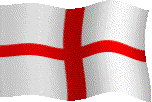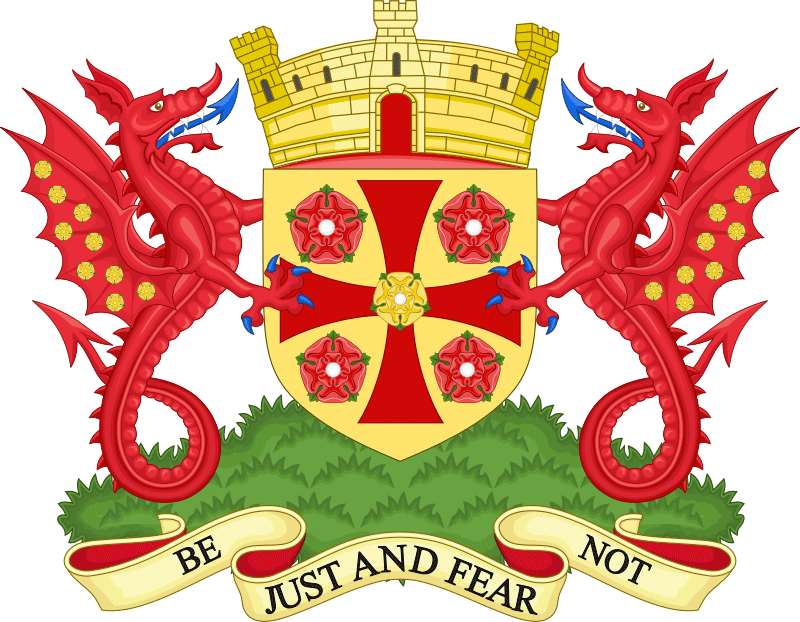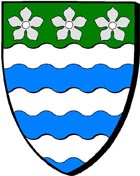
Encyclopédie Marikavel-Jean-Claude-EVEN/Encyclopaedia/Enciclopedia/Enzyklopädie/egkuklopaideia
 |
|||

England Bro Saoz |
 |

Cumberland Bro Gembre an Hantronoz |
|
Carlisle Caer Liwelydd Luguvalium |
| pajenn bet digoret ar 16.02.2005 | page ouverte le 16.02.2005 |
* forum du site Marikavel : Academia Celtica |
dernière mise à jour, 07/07/2025 16:48:56 |
![]()
|
Définition / Displegadur : Ville d'Angleterre; comté de Cumbria / Cumberland, au fond de la ria de la rivière Ituna ./ Eden |
|
![]()
| Armoiries; blason / Ardamezioù; skoed : "d'or à la croix potencée de gueules,
chargée en cœur d'une rose d'or feuillée de sinople et boutonnée
d'argent, et accompagnée de quatre roses de gueules feuillées de sinople
et boutonnées d'argent"
- "en aour e groaz krouget en gwad, karget ouzh kondon gant ur rozenn en aour deliaouet en geot ha nozelek en arc'hant, hag heuliet gant peder rozenn en gwad deliaouet en geot ha nozelek en arc'hant" |
|
![]()
|
Extrait de la carte Ordnance Survey : Map of Roman Britain. |
![]()
|
Extrait de la carte Ordnance Survey : Hadrian's Wall. |
![]()
|
Extrait de la carte Ordnance Survey : Britain in the Dark Ages. |
![]()
|
Histoire / Istor : * JC Even : L'emplacement de Carlisle correspond au fond de la ria de la rivière Ituna / Eden, c'est à dire à l'endroit de rencontre moyen des marées avec le fleuve d'eau douce. C'est donc un endroit de passage classique et conforme à ce que l'on peut trouver ailleurs. Il semble appartenir au territoire des Brigantes. Ce passage sert à Petilius Cerialis à porter ses attaques sur le nord de l'Île avec ses troupes basées à Deva / Chester. Il constitue donc, logiquement, la place principale à l'ouest du Mur d'Hadrien (122-128). Si Lugubalium semble être plutôt une "ville", située à l'ouest de l'Eden, dans la courbe concave rive gauche, la première forteresse est celle de Petriana / Stanwix, située sur l'autre rive, côté est, sur la rive droite, dans la courbe convexe de l'Eden. ***** * Bede : traduction anglaise par Leo Sherley-Price : A History of the English Church and People. - page 264 : "There was a priest of praiseworthy life named Herebert, who had for a long time been linked in a spiritual friendship with the man of God. He lived the life of a hermit on an island in the great lake which is the source of the river Derwent, and used to visit Cuthbert each year to seek his advice on matters of eternal salvation. Hearing that Cuthbert had come to the city of Lugubalia, he went to visit him as usual wishing to be ever more fervently inspired to heavenly desires by his salutary guidance". ***** * I.A Richmond (1955 - 1973) : - pages 37-38 : "The modern main road from the Vale of York to Carlisle follows in most places the line of its roman predecessor, which branches from the roman north road from Chester to Carlisle and which canot be much later than Agricola. Earlier still - for one of them is obliterated by the York-Carlisle road- come three marching-camps, big enough to hold a legion and some cavalry and of an individual yet similar design quite different from those associated with Agricola's troops. It is not unreasonable to assign these three works, which cover the route from Stainmore to Carlisle, to the army of Cerealis and in particular the Ninth Legion. Driving thus for the Solway and perhaps beyond it, Cerealis was using an age-old line of cultural and economic penetration which had been the principal channel of Brigantian expansion. The amount of early pottery at Carlisle has been though to suggest that the grip of the Eden crossing was already more than temporary, as if an advanced post here ensured the fulfilment of terms of peace. The depth of the drive was no doubt conditioned by the existence of those external anti-Roman allies upon whom Venutius had been able to call with such effect a year or two before". - page 211 : "... there is evidence for Mithraism on or near the Wall at Castlesteads and Carlisle ..." ***** * John Morris (1973 - 1977) : - p 198 : "When the Normans destroyed the English monarchy in 1066, Malcolm revived his father's ambition, and sought to extend his borders by repeated un profitable invasions of England. But he was no match for the Norman kings, and he lost his ancestors' southern conquests. In 1092 William Rufus fortified Carlisle and colonisated Cumberland; when Malcolm lost his wife next year in another ill-organised invasion of Northumbria, the eastern border was permanently fixed upon the Tweed, and the old Roman frontier of the Cheviots was at length re-established". ***** * Stephen Johnson (1980-1982) : - p 12 : extrait de carte montrant des modifications provinciales et administratives du IVè siècle.
- p. 108 :
- p. 112 :
***** |
![]()
| Archéologie / Arkeologiezh :
À la découverte de Roman Carlisle La ville anglaise de Carlisle, centre de l'Empire romain au début du IIIe siècle ? - Geo.fr |
![]()
|
Étymologie / Gerdarzh A) LUGUVALIUM : * Rivet & Smith, p. 402-403 : - Inscription, RIB 2015, un autel découvert dans les fondations du Mur d'Hadrien à Old Wall, à l'ouest du milecastle 59 : "... GENIO ( ...) VALI". L'autel est dédié à Mars Cocidius et au Genius de ( ...) VALI.... Ce dernier fragment, comportant un seul -l-, ne correspond pas à un génitif de vallum, mais pourrait très bien représenter (Lugu)vali. L'espace manquant sur cette pierre cassée (à partir de la représentation faite par RIB) est exacte pour quatre lettres. Le Milecastle 59 se trouve à environ 6 miles de Carlisle; la pierre a été réutilisée dans la fondation du Mur après avoir été déplacée de quelque part alentours". - Itinéraire d'Antonin, 4672 (Iter II) : LUGUVALLO; - Itinéraire d'Antonin, 4741; 4766 (Iter V) : LUGUVALIO; - Ravenna, 10710 : LAGUBALUMI; variante LAGUBALIUM. "Dans ces sources, la première forme donnée par Itinéraire d'Antonin la montre avec un -ll- comme une assimilation au latin vallum, mur, rempart. Les deux formes de Ravenna montrent de quelle façon l'erreur de lecture s'est propagée dans les recopies de ces lettres. L'indication faite par H. Peter à partir de Sévère 22,4 (Historia Augusta) à partir de laquelle on interprète le nom de Carlisle, n'est pas acceptée). "DERIVATION. For the first element, see LUGUDUNUM; for the second, see BANNOVALIUM. The name does not mean 'rampart of the god Lugus', but is based on a personal British name *Lugu-ualos with *-io- derivational suffix, hence * Luguualion 'town of *Luguualos' (Jackson in Britannia, I (1970), 76). From the British name derive Old Welsh Cair Ligualid, Welsh Caer Liwelydd, Anglo-Saxon Luel (Bede) and modem Carlisle. But Bede also preserved a memory of the official Latin name, as Lugubalia, iv, 29; and taking up a reference in the anonymous Life of St Cuthbert (c. A.D. 698—705) he writes in his own Vita prosaica of the Saint (in Migne, Patrologia, vol. xciv) venit ad Lugubaliam civitatem, quae a populis Anglorum corrupte Luel vocatur (cols. 766—67), and later ad eamdem Lugubaliam civitatem (col. 768). This was taken up by William of Malmesbury in the prologue to Book III of his Gesta Pontificum Anglorum (Migne, Patrologia, vol. CLXXIX) : Velut est in Lugabalia (sic) civitate triclinium lapidum fornicibus concameratum. . . (col. 1550-1551)". IDENTIFICATION. The Roman town of Carlisle, Cumberland (NY 4056), probably later promoted tu the status of city as the capital of the civitas Carvetorium : see CARVETII. ***** B) CARLISLE : * Eilert Ekwall : "Luguvall(i)um 4 IA, c 425 ND, Lugubalia, c 730 Bede; Luel, c 1050 HSC, c 1130 SD, Cardeol 1092 ASC (E), Karlioli (gen.). c 1100 WP; Caerleoil, 1130 P; Caer liwelyd, Taliesin, Modern Welsh Caer Liwelydd. The original name is generally explained as meaning "the wall of the god Lugus". The later form do not quite agree with this etymology and Professor Jackson in PNCu (S) suggests derivation of the old Brirish name from a personal name Luguvalos. To the old name was prefixed Waelsh caer 'city'. * A.D Mills : "Luguvalio 4th cent., Carleol, c 1106. An old celtic name meaning '(place) belonging to a man called *Luguvalos, to which Celtic cair 'fortified town' was added after the Roman period". ***** Commentaires JCE : |
![]()
Carlisle dans la légende arthurienne
|
activer le blason, qui est un lien menant à la page |
![]()
|
Sources; Bibliographie / Eien; Levrlennadur : - ALF RIVET & Colin SMITH : The Place-Names of Roman Britain; - Eilert EKWALL : The Concise Oxford Dictionary of English Place-Names. Oxford University Press. 1936; édition 1980. - André MARY : Tristan. Éditions Gallimard. 1941. Livre de poche n° 1306. - I.A RICHMOND : Roman Britain. Penguin Books. Harmondsworth. England. 1955 / 1973. - Leo SHERLEY-PRICE : Bede. A History of the English Church and People. Penguin books. Harmondsworth. England. 1955 / 1968. - Lewis THORPE : Geoffrey of Monmouth. The History of the Kings of Britain. Penguin Books. Harmondsworth. England. 1966 / 1973. - Jean-Pierre FOUCHER : Chrétien de Troyes. Romans de la Table Ronde. Le cycle courtois. Éditions Gallimard et LGF. 1970. Livre de Poche n° 1998. - John MORRIS : The Age of Arthur. Vol. 2 : The successor States. Phillimore. & Co. Ltd. 1973. Edition 1977. - John MORRIS : Nennius. British History and the Welsh Annals. Phillimore. 1980. - Stephen JOHNSON : Later Roman Britain. Britain before the conquest. Routledge & Kegan Paul Ltf, 1980; Paladin Book. Granada Publishing Ltd. 1982 - Ruth MINARY & Charles MOORMAN : Petit dictionnaire du Monde arthurien. Academy Chicago Publishers. 1990. Terre de Brumes Éditions. 1996. - Norma Lorre GOODWICH : Le Roi Arthur. 1986; Traduction française Geneviève Grimal, Librairie Arthème Fayard. 1991. - Jean MARKALE : Petite encyclopédie du graal. Pygmalion - Gérard Watelet. 1997. - A-D MILLS : Dictionary of British Place Names. Oxford Paperback reference. Oxford University Press. 1991; édition 2003. - envoi de : |
![]()
|
Liens électroniques des sites Internet traitant de Carlisle / Luguvallium : * Site communal : * Wikipedia brezhonek : * pajenn Wikipedia brezhonek : * forum du site Marikavel : Academia Celtica * Autres pages de l'encyclopédie Marikavel.org pouvant être liées à la présente : http://marikavel.org/heraldique/bretagne-familles/accueil.htm http://marikavel.org/broceliande/broceliande.htm * solidarité nationale bretonne avec le département de Loire Atlantique : Loire-Atlantique * sauf indication contraire, l'ensemble des blasons figurant sur cette page ont été dessinés par J.C Even, sur bases de GenHerald 5. - les blasons et armoiries de Carlisle proviennent de recherches faites sur Internet. * Introduction musicale de cette page : Bro Goz Ma Zadoù, hymne national breton, au lien direct : http://limaillet.free.fr/MP3s/BroGoz.mp3 hast buan, ma mignonig, karantez vras am eus evidout go fast, my little friend, I love you very much |
![]()